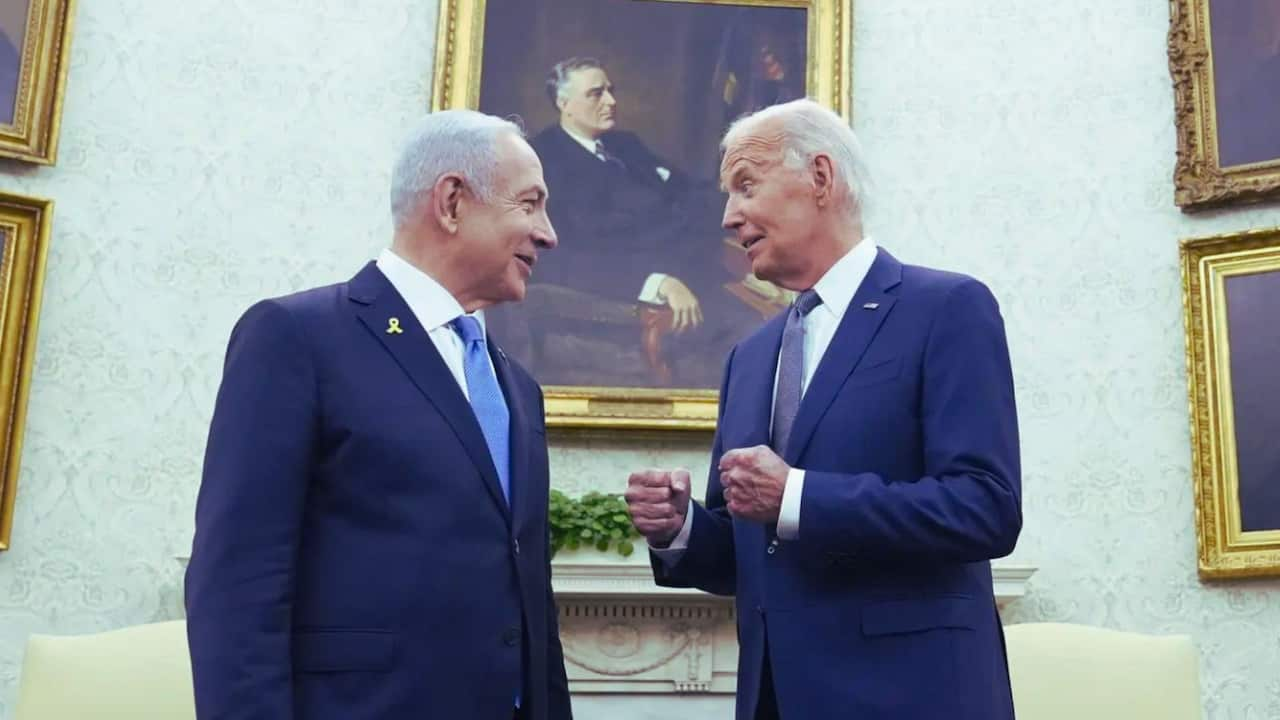Classified documents expose US assessments of Israeli strike plans against Iran.
In a dramatic development that has sent shockwaves through diplomatic circles, highly sensitive US intelligence documents detailing Israel’s potential military preparations against Iran have surfaced on the messaging platform Telegram. The leak has sparked immediate concern from President Joe Biden and triggered a high-level investigation into the breach.
The Leak: What We Know
The classified documents, marked as “Top Secret” and bearing telltale intelligence community markers like “FGI” (Foreign Government Intelligence), appeared on Telegram last Friday. These papers contain detailed US satellite imagery analysis of Israeli military movements and preparations, specifically focusing on two key weapons systems:
- Golden Horizon: Believed to be the codename for the Blue Sparrow missile system
- Rocks: A long-range missile system designed by Israeli defense contractor Rafael
White House Response
John Kirby, the White House National Security Council spokesman, addressed the situation head-on: “The president remains deeply concerned about any leakage of classified information into the public domain.” The administration has launched an urgent investigation to determine whether the breach resulted from a hack or an internal leak.
Regional Tensions Escalate
The timing of this leak is particularly sensitive, as it follows a series of events that have escalated regional tensions to an unprecedented level:
- September 27: Israel’s reported assassination of Hezbollah leader Hassan Nasrallah
- October 1: Iran’s retaliatory missile strike against Israel
- Mid-October: US intelligence assessment of Israeli preparations
Military Implications
Military analysts note that the leaked documents suggest Israel may be planning an expanded version of its previous Air Launched Ballistic Missile (ABLM) attacks. By using long-range missile systems, Israel could potentially strike Iranian targets without needing to violate other nations’ airspace.
Notably absent from the documents are specific target locations or timing details. However, experts suggest likely targets could include Iranian Revolutionary Guards Corps (IRGC) facilities rather than nuclear or oil installations.
International Reaction
The circulation of the documents within their network has particularly concerned the Five Eyes intelligence alliance members (US, UK, Canada, Australia, and New Zealand). Foreign Minister Abbas Araghchi swiftly and directly responded, warning that any parties with knowledge of potential Israeli attacks would face accountability.
Looking Ahead
While Israel has promised retaliation for Iran’s October 1 missile barrage, several factors may influence timing:
- Upcoming US presidential elections
- International pressure for de-escalation
- Complex regional alliances
- Operational security concerns
The leak itself may force changes to existing plans, potentially delaying or altering any intended military action.
Expert Analysis
Security analysts suggest the leak could serve multiple purposes:
- Deterring potential Israeli action
- Warning Iran of possible attacks
- Influencing international opinion
- Testing alliance relationships
As tensions continue to mount, the international community watches closely. With both Israel and Iran maintaining their defensive postures, the risk of further escalation remains high.
This developing situation underscores the complex interplay between military strategy, intelligence operations, and international diplomacy in one of the world’s most volatile regions.
Table of Contents
